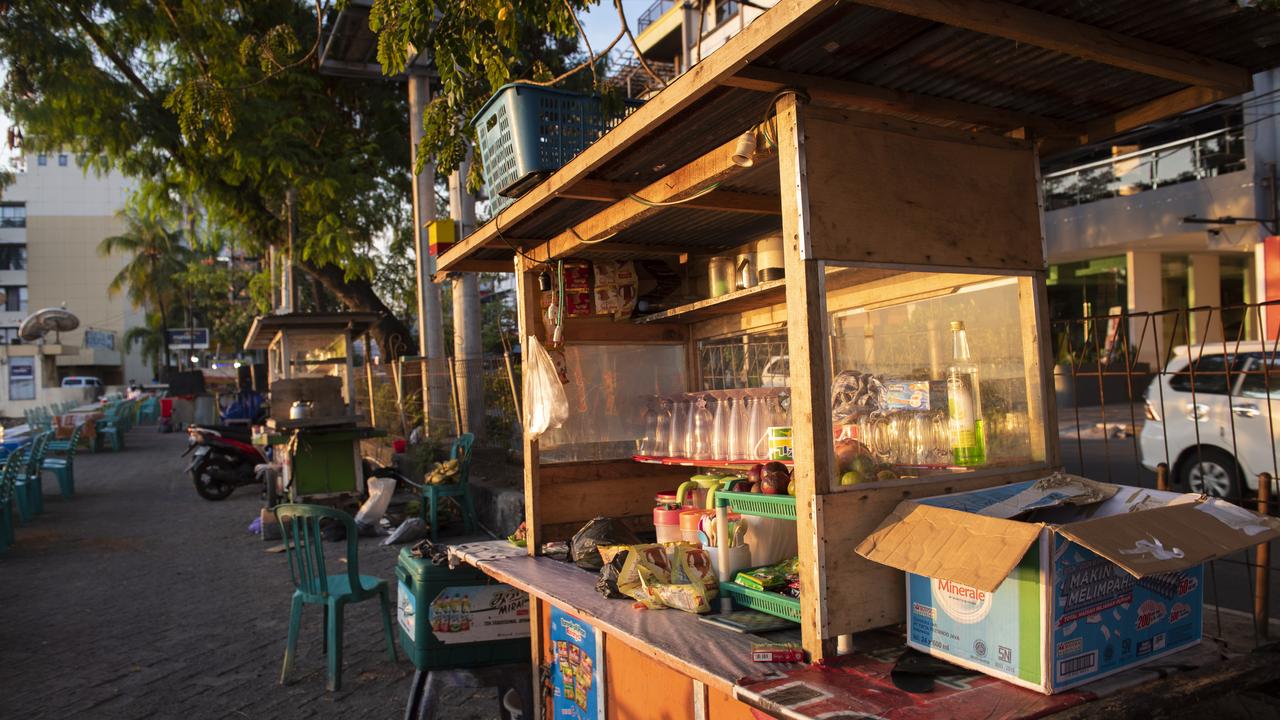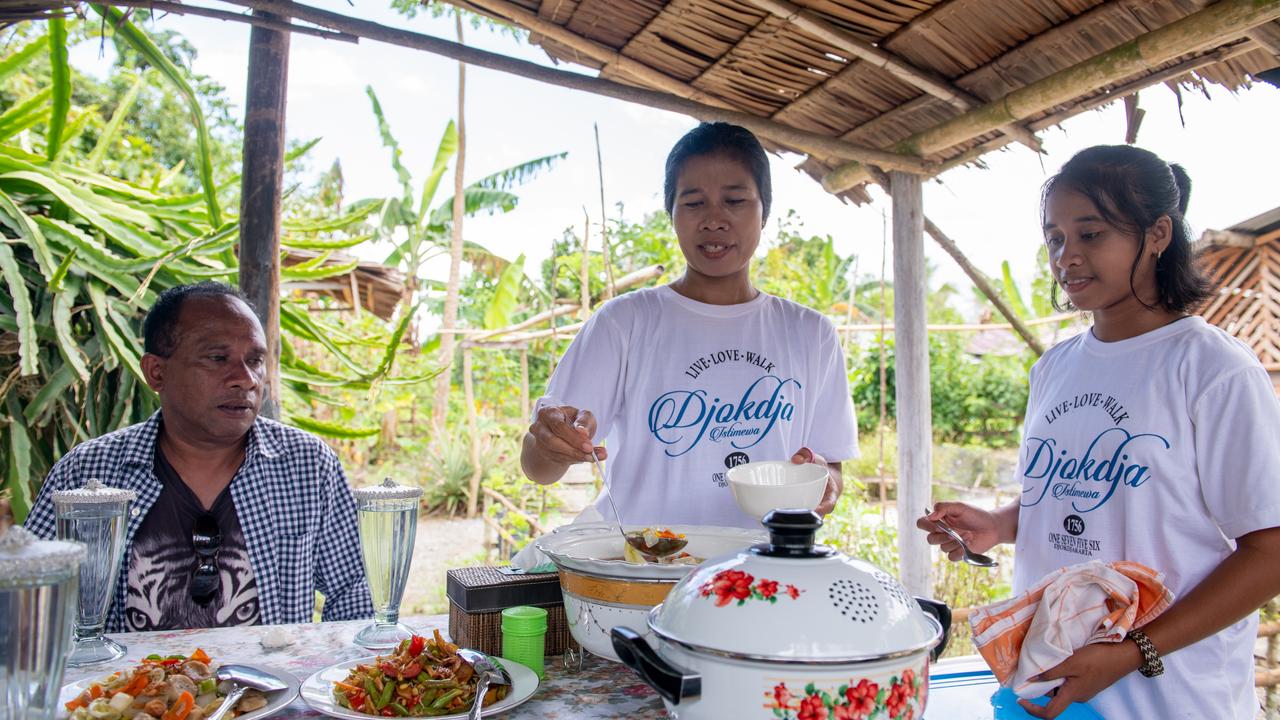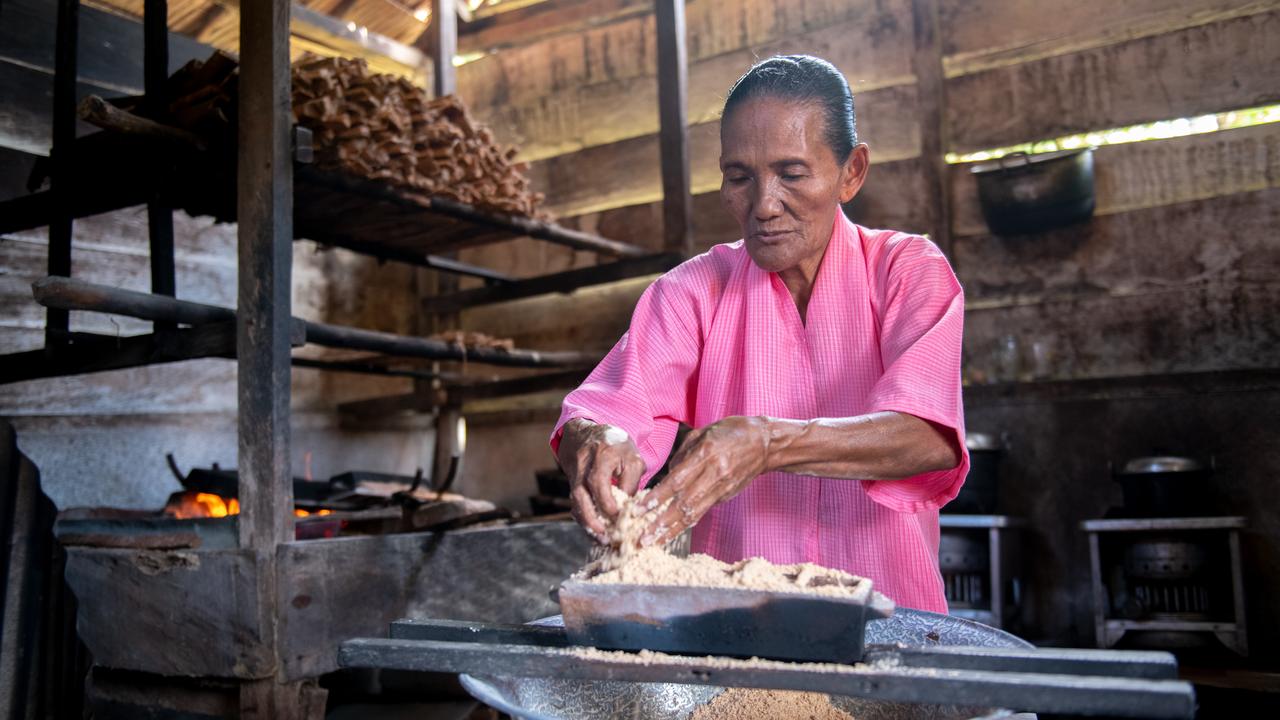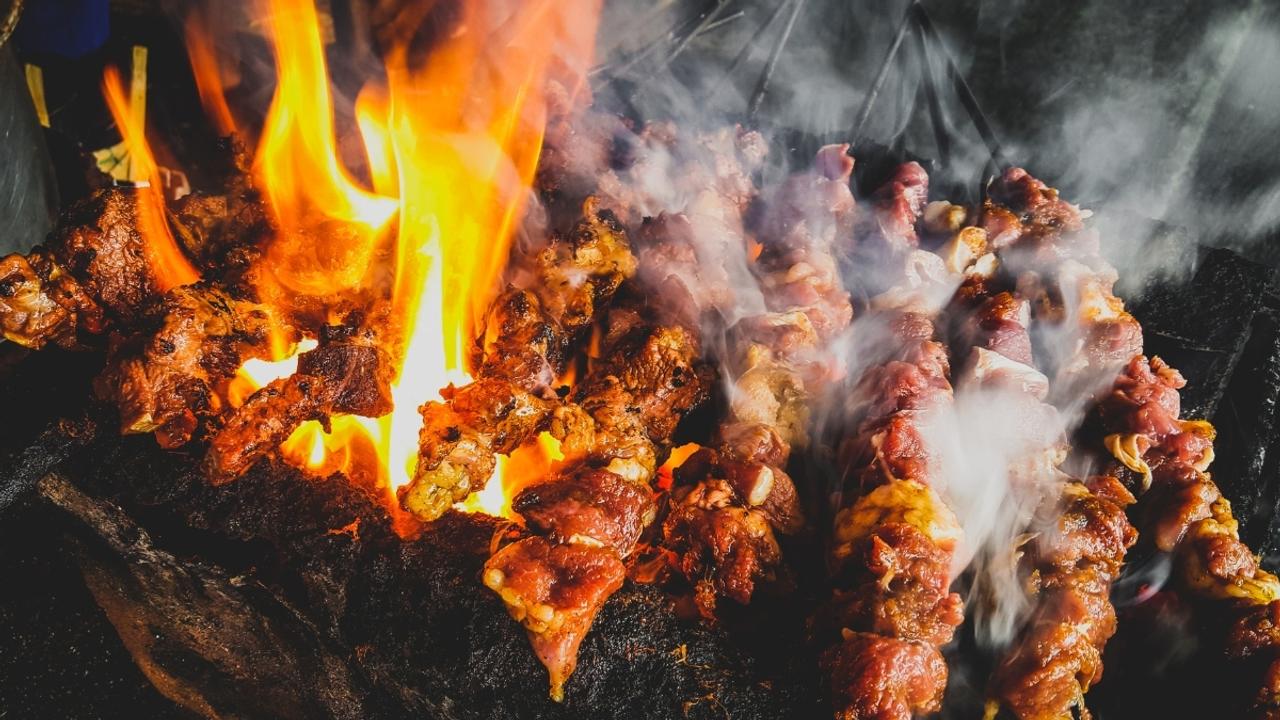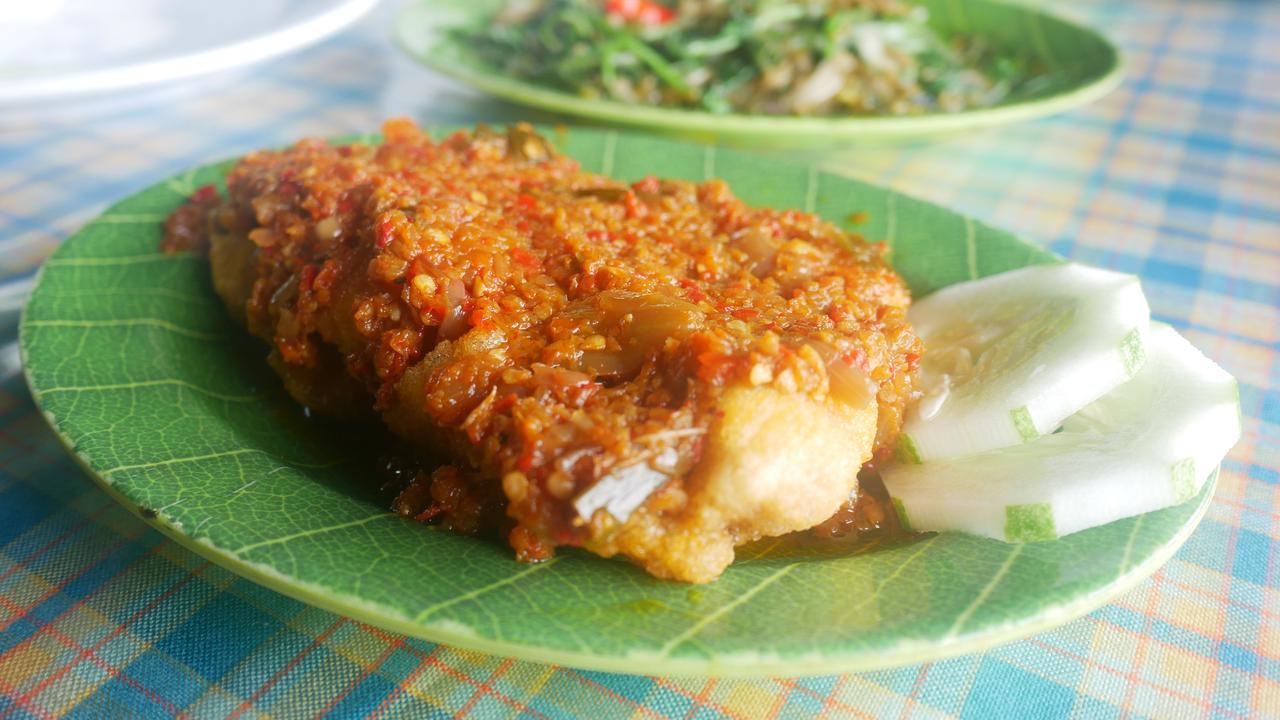Taste Indonesia
Indonesia’s cuisine is as varied as its shorelines. Ancient trade winds drift through the country’s richly-flavoured dishes, bringing evocative spices and fragrant aromatics into every bite. The individuality of each island rushes forward in Indonesian food, with a hundred different ways to prepare each dish, while a constant hum of the nation’s collective warmth ties it all together.
Whether slow-cooked or speedily grilled, Indonesian food is comfort food: made with love, satisfying to eat, and brimming with ingredients that nurture body and soul. Many dishes have their origins in the home kitchen, and Indonesian cuisine offers some of the best Asian dishes to try cooking at home, instantly taking yourself back to those unforgettable flavours on beach in Lombok or a street corner in Yogyakarta…
Indonesian food seems to have a dish for every mood and moment. Rich rendang curries with layers of flavour to fill the belly and warm the cockles; hearty gado-gado salads made to share with friends and family; nasi goreng rice, with a dozen different toppings, tailored to your tastes. Wander along each island’s city streets or beachside walkways to discover dishes from every corner of Indonesia and beyond.
What to expect from Indonesian food:
Shared dishes & communal dining
Heady spices & complex flavours
Quick eats from city markets & beachside stalls
Slow-cooked curries with plenty of depth
Rice at the core
Flexibility & choice
Image gallery
Indonesian cuisine focuses on community and shared experience, serving everyone from the same dish and dining slowly, digesting the day along with each other’s stories. Food in Indonesia is both medicine and comfort, and central to every occasion from festivals and national celebrations to family gatherings. Indonesian dining gives individuals more than average levels of choice for communal meals, offering multiple components so that each person can create their perfect plateful.
Indonesia’s flavours are deep and rich, brought forward by the many spices and aromatics that are grown across the islands. Smokey peppercorns and sweet cinnamon; earthy ginger, lemony galangal and fiery chilli; perfumed cardamom and heady vanilla; sour tamarind, warm nutmeg and punchy clove. Grassy pandan adds a nutty, floral profile into the sweet mix, while cumin brings out the savoury umami. As an island nation, fish and seafood play a major role in Indonesian food, as do fresh fruit and vegetables, and slow-cooked or quickly-grilled meat. Peanuts add richness, raw veggies and crisply-fried morsels add crunch, and eggs and rice often appear as central staples.
Indonesia’s best dishes
Many countries have their national dishes - those iconic eats synonymous with a destination around the world - but few take this quite as seriously as Indonesia, who have six officially-named national dishes! We can see why there are so many - we’d find it impossible to choose just one…
Tumpeng
Named as Indonesia’s first official national dish, tumpeng is a real culinary celebration: a carefully-moulded cone of rice surrounded by an assortment of intricately-prepared toppings including fried chicken, tender beef, marbled egg, shredded omelette, corn fritters, spicy sambal, and piquant vegetables. Each diner composes their own perfect plateful from the variety on offer - a thread running through many Indonesian dishes. There are dozens of variations of tumpeng, with different flavours of rice and different toppings, and each family has their own special recipe. You could eat tumpeng a hundred times and never have the same dish twice!
Rendang
Rendang is a rich, aromatic curry, usually made with beef, that develops its deep flavours by cooking the meat slowly with coconut milk and spices until flaky and tender. The result is a fairly condensed dish, with just a little thick sauce that packs a punch, and meat that melts in your mouth - it’s a dish that can’t be hurried, but is more than worth the wait. Moreish is an understatement! In 2018, rendang was named as one of an additional 5 official national dishes of Indonesia (the other four are listed below), and it’s definitely one to try recreating at home, perhaps for a leisurely Sunday lunch.
Soto
Indonesia’s answer to the Asian staple noodle soup, which runs from Vietnamese pho to Japanese ramen, soto is truly food for the soul. With a base of chicken broth ladled over delicate vermicelli noodles, the different varieties of soto are enriched with each region or restaurant’s distinctive additions, including shredded chicken, spicy pork, crunchy bean sprouts, peanuts and spring onions. With its roots in Java, this national dish is served in every corner of the archipelago and in every kind of eatery, from street-side warungs to high-end restaurants.
Satay
We’re going to stick our necks out and say that satay, or sate, must be one of Indonesia’s best-loved dishes, and definitely it’s most well known beyond its borders. These skewers of sliced meat, speedily grilled or barbecued and served with sticky peanut sauce and salty-sweet kecap manis, are an Indonesian street food staple - quick, affordable and satisfying to eat on the go. Thought to have originated in the markets of Java in the 15th century, potentially as an adaptation of kebabs from the Indian Subcontinent, satay was adopted in wider parts of Asia, including Malaysia and Thailand. This iconic dish’s popularity and variations track the history of international trade and cross-cultural influences in the region across the decades.
Nasi Goreng
Nasi goreng - an Indonesian take on fried rice - is a real all-rounder: a full-on comfort food, and the perfect dish to share with friends. In nasi goreng, it’s the central rice itself that’s packed with extras, with variations ranging from simple refried rice with a little kecap manis, to elaborately fragrant rice fried with onions, shrimp paste, green beans and chilli. Sometimes chicken, pork or prawns are added in, or served alongside as an optional addition, along with a selection of other toppings. There’s usually an egg involved somewhere, either fried or as strips of omelette, and crunchy raw vegetables such as cucumber and carrot. The joy of this dish is its versatility - serve it as you like to eat it, and allow your guests to customise it to their tastes.
Gado-gado
The last of Indonesia’s six national dishes, gado-gado, is a large salad made for sharing (are you sensing a theme here?!) Less carb-centric than some Indonesian cuisine, gado-gado is a mixture of cooked and raw vegetables, boiled potatoes and hard-boiled eggs, arranged on a platter for maximum celebratory impact, and served with a sweet-spicy peanut sauce drizzled generously over the top. Sometimes cooked meats are added, but it’s definitely one of Indonesia’s most veggie-friendly dishes, as it’s usually served meat-free (though do ask about shrimp paste in the sauce). The sauce ties everything together into much more than the sum of its parts, creating a health-boosting salad that definitely calls for second helpings!
Where to eat the best street food in Indonesia?
Wander through the heart of Jakarta on a leisurely evening stroll, sampling whichever examples of the city’s best street food cross your path, from martabak stuffed pancakes to goat fried rice - a specialty of Java’s Betawi communities. Explore a different side to Javanese cuisine in Yogyakarta on locally-led food tours, kicking things off with some strong kopi joss – Indonesia’s famed charcoal coffee - and tasting quick eats such as satay skewers and fish cakes, before finishing up at a communal pendhapa pavilion to graze on a picnic of street food snacks at your leisure. Eat dinner in three parts - starter, main and dessert - at different dining destinations across Ubud in central Bali, and experience a totally different take on Indonesian cuisine in the vibrant markets of Makassar, Sulawesi’s coastal capital.

